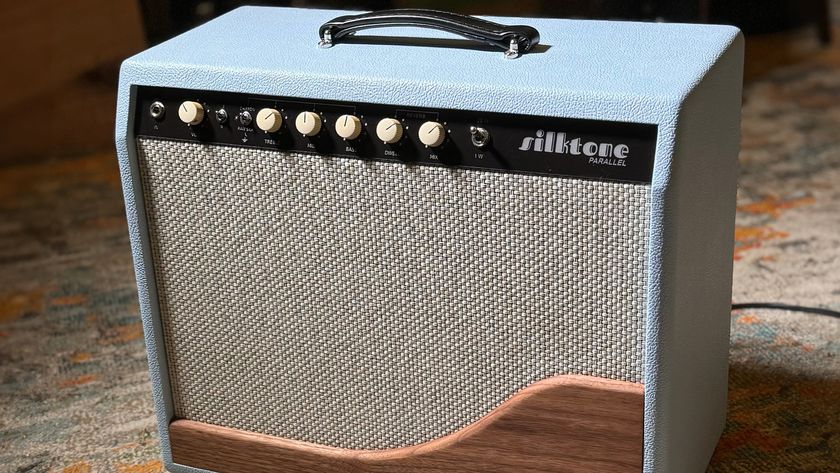Interview with Rory Block: When a Woman Gets the Blues

What happens when a 14-year-old white girl sits down with blues legends and shoots the breeze?
Ask guitarist Rory Block. She’ll tell you the blues is in her blood. In her soul. In her hands.
Block picked up the guitar at age 10 and by her early teens was learning from the men that birthed the blues. We’re talking Reverend Gary Davis, Son House, Skip James, Mississippi John Hurt.
Block left home at 15 with her guitar and a few friends and headed for California. After a few attempts to fit into a more commercial mold, she admitted defeat and went back to her blues roots. The result was a record deal with the Boston-based Rounder label, which released her High Heeled Blues in 1981. Rolling Stone referred to the album as “some of the most singular and affecting country blues anyone – man or woman, black or white, old or young – has cut in recent years.”
Fast-forward to today, and Block has more than 20 highly acclaimed releases and five Blues Music Awards under her belt. Last year, Block published her autobiography, When a Woman Gets the Blues, a chronicle of her life that features many photos and personal accounts of her interactions with the blues greats.
We had a chance to speak to Block from her studio, as she was recording her latest effort, a tribute to the Reverend Gary Davis. Here’s what she had to say.
GUITAR WORLD: Why don’t you tell me about what you’re working on now, your new project?
Get The Pick Newsletter
All the latest guitar news, interviews, lessons, reviews, deals and more, direct to your inbox!
Well, I have a larger project that I call “The Mentor Series.” What I’m doing is making a series of tribute albums to the blues masters who I met in person. The re-discovered blues masters, thus far. And my concept is to have a boxed set of the final result.
So far it’s Son House, Mississippi Fred McDowell, and now we’re doing Reverend Gary Davis. All of the blues masters mentioned were ones I was lucky enough to meet in person. And the lifelong influence has been huge from everybody I met. I also met Skip James, Mississippi John Hurt, Bukka White. I’ve also done a tribute to Robert Johnson that came first, but of course, I couldn’t have ever met him in person because he died before I was born! It’s too bad, because in a way, that began The Mentor Series. He was the first of the blues masters who I absolutely was smitten by.
So this is my box set concept, and it’s felt really emotional and really powerful for me to be immersing myself again in a music of the artists that I knew in person. But the memories are just so powerful. The other day when we were doing “I Belong to the Band,” as I listened to it, it just brought back the period of my life when I was 14 and 15, where this is all that I did morning, noon and night. Play music, play blues, listen to blues, visit the blues masters, go to their concerts, travel across the country. Music, music, music all the time. It just brought tears to my eyes, and I just thought, “Wow, what an amazing period of history. What an incredible time in my life that was.”
Since you’re working on this album about Reverend Gary Davis, can you tell me about what you took away from that experience with him? And some of the other blues masters as well.
The first of the blues masters I met was probably either Reverend Gary Davis or Mississippi John Hurt. Friends of mine knew everybody that was rediscovering and looking for the old blues masters. And so we would be informed immediately if that person had been found, that person was being brought in to the city for a concert, and we would go. That was a rock-my-world moment where the person’s charisma, like Mississippi John Hurt, was just giant for me. It was just giant. It was like here is this legendary human being who created these songs that I love. Here’s the person whose voice and music I listened to. And so there’s this feeling of knowing somebody, in a way, and then there they are. Really powerful.
And then also, with Mississippi Fred McDowell, he came to the place where we were staying in Berkeley, California. Just the door was open one day, and there was Mississippi Fred McDowell, and I was just knocked out. And then we played music together and we interacted and we were able to visit and talk and hang around, and that was incredibly powerful. And watching him play slide, when I recorded his music recently, I remembered watching him play, and it helped me not only become a better player, the memory of it today, revisiting that memory. I look back and I go, “Wow, let’s see. He had the slide on his third finger. That’s why I have a slide on my third finger. That’s right, that’s the way Fred McDowell did it.”
And then, Reverend Gary Davis lived in the Bronx. He was really funny, really witty. And it was also entertaining, in that regard, it was like watching him and Stefan [Grossman] sort of trade jabs. It was like being at a roast, haha. And so it was really funny, and it was really entertaining and it was musically inspiring. And he was giving lessons to Stefan, and I didn’t do that style at all, for some reason. I dabbled in several songs but not really. I went in the Mississippi slide and strumming styles, but not in that super high intensity picking style of Reverend Gary Davis. Now I have to revisit that altogether.
I have a little bit of information from when I used to play, “I Belong to the Band.” I used to play “Sit Down on the Banks” just enough to go, “Oh my god, he does everything in reverse.” His bass notes are absolutely the reverse of what you expect. The little rolls that he does require vast amounts of dexterity to get it right. So I am stretching as I do with each one of these albums, stretching beyond the limit to get it to the best of my ability. But it’s really good for me as a player. And it helps to remember the men in person. It really helps... The memories float back, and I think that I’m revisiting what I looked at then with new perspective.
I read that on the two previous albums that you’ve done in this series you took the music and then added your own touch to it. Are you doing the same thing with this project?
Yes, that has happened thus far. I’ll go back to the Robert Johnson recording, The Lady and Mr. Johnson, because with that one, I just felt like I didn’t want to improvise. It was my goal to crack the code and do it as accurately as I humanly could do it.
Then with Son House, Blues Walkin’ Like a Man, it started veering out a little bit. I didn’t have a goal to make it any different but it just sort of felt like it opened up a little bit and my current-day energy sort of folded into the tracks. But I didn’t write any music for that CD.
Then with Mississippi Fred McDowell, Shake ‘Em On Down, a new door opened up where I definitely felt a bunch of my energy from today was weaving into the tracks. And then I wrote some stuff, which I didn’t expect to do. So I’m thinking four tracks maybe are original. “Steady Freddy,” “Mississippi Man,” “Ancestral Home,” and “Bread Line.” It just is what happens in the studio; because it’s a birth, and you don’t really know a lot about what the baby’s gonna look like.
But you love it no matter what, right? Let’s talk about guitars a little bit. I’m guessing you continue to use your signature Martin guitar?
Yes, yes. I thought I would try a different a guitar. The reason is Reverend Gary Davis used a narrow neck guitar, which is a Gibson J-200 that he used, and he had huge hands. They’re probably twice the size of mine, at least. And there’s all of this activity where you reach over the top of the neck and you use your thumb, not only for one note but two notes. I’ve always used my thumb in my playing, and I probably got the notion and the idea early on from Reverend Gary Davis. But I mean, if you cover two notes with your thumb and then you have to bring all your fingers down to your average chord, say a C chord, that’s really painful on a wide neck.
And I always loved wide-neck guitars, so Martins I grew up playing were wide neck guitars, and I felt really comfortable. It’s really interesting because your hand gets used to the spacing between the strings and the frets. And to switch to a different width neck, your fingers sometimes go to the wrong string literally, or you land between the strings because you’re used to a different spacing. So as I look at this record and I look at the guitar parts, I really have to reach over the top of the neck.
So I called up Martin and I said, “Listen, I have to do this Gary Davis album.” So they sent me a model guitar they had in their inventory just for this record. Which is amazing, I love them so much. They’re such a great company, and the fact that they would help out in that way is unprecedented. So they shipped it out to me right away. But, and I’m gonna tell them this, I somehow managed to maintain all the work on my existing signature model guitar. I just sort of kept working at it and I’m coming along and I haven’t yet felt like the other guitar was really needed yet.
So you really are stretching then, in every sense of the word.
Oh, yes. It’s a little bit of torture but it’s good. This is what always should happen to me when I do a focused project like this. It stretches the limits.
Rory Block is touring this spring! Check out roryblock.com to find out when she’s coming to a town near you and release dates of her tribute to Reverend Gary Davis!
Here Rory Block takes on Robert Johnson’s “Crossroad Blues.”
Here's a rousing “Me and the Devil.” Killer.
Laura B. Whitmore is a singer/songwriter based in the San Francisco bay area. A veteran music industry marketer, she has spent over two decades doing marketing, PR and artist relations for several guitar-related brands including Marshall and VOX. Her company, Mad Sun Marketing, represents 65amps, Acoustic Bass Amps, Agile Partners, Guitar World and many more. Laura was instrumental in the launch of the Guitar World Lick of the Day app. She is the lead singer for the rock band, Summer Music Project. More at mad-sun.com.







Laura B. Whitmore is a music industry marketing veteran, music journalist and editor, writing for Parade.com, Guitar World, and others. She has interviewed hundreds of musicians and hosts the She Rocks Podcast. As the founder of the Women’s International Music Network, she advocates for women in the music industry and produces the annual She Rocks Awards. She is the Senior Vice President of Marketing for Positive Grid, making the world safe for guitar exploration everywhere! A guitarist and singer/songwriter, Laura is currently co-writing an album of pop songs that empower and energize girls.

“We had 15 minutes left, and it was time to go… I just started playing that riff. Then Lenny goes, ‘Whoa, what’s that?’” Lenny Kravitz guitarist Craig Ross reveals the serendipitous roots of a Kravitz classic

“The concept of the guitar duel at the end was just appalling”: Crossroads is an essential piece of '80s guitar lore, but not every guitar legend was a fan of the film








